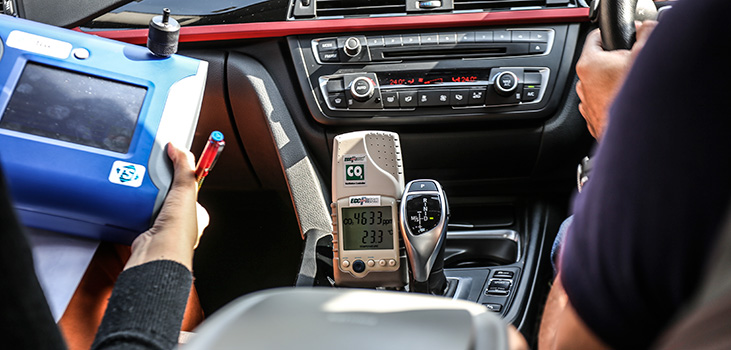With the sales of home air purifiers going through the roof, Philips introduces one for your car.
We tested a Eureka Forbes car air purifier in June 2015, and to be honest, we weren’t sure about how effective it really was. What was discernible was the fact that it did actually cut odours in the cabin, but we couldn’t gauge its ability to cut the dreaded PM2.5 levels. So, for this test, we decided to be a little more scientific and recruited the expertise of Breathe Easy Consultants (www.breatheeasylabs.com) to scientifically test whether this device is actually worth its Rs. 7,999 price tag.
When we initiated the test, at noon, the ambient PM2.5 levels were 173 micrograms per cubic metre. The WHO recommends that levels shouldn’t exceed 15μg/m3. Nevertheless, 173 was far better than ambient levels of 343 just an hour-and-a-half prior, at 10:30am – which gives you some indication of the fact that the air quality is best in the afternoon, so perhaps you ought to reschedule that early morning jog accordingly. We started the test by running the air-conditioning in recirculation mode, and even without the air purifier on the PM2.5 levels dropped to 79 micrograms per cubic metre – which meant that the filters in our test car (a BMW 328i) are actually quite effective in themselves. We then ran the air purifier for five minutes, at which point the PM2.5 levels dropped to a very impressive 16 μg/m3.
The trouble now was that we were sitting in a gas chamber of a different sort. With four people in the car for ten minutes with no fresh air inlet, the CO2 levels went from 1,000 parts per million to 4,300. Ambient CO2 levels are typically 350ppm. So we decided to turn off the recirculate mode of the air conditioning and run the test once more. The CO2 levels immediately dropped to about 3,000ppm, while the PM2.5 levels settled at about 30 μg/m3. All told, the Philips GoPure air purifier cut the in-car PM levels by half – combine that with the effectiveness of the in-built filters in the BMW and I have to say that we were pleasantly surprised with the end result. You do have to keep turning off the recirculate mode to ensure that the CO2 levels don’t get out of hand though.

The real trouble with the Philips unit, then, is its design. It wasn’t especially easy to mount in the car, and it stayed on even with the ignition turned off. Ideally, it should have an off button – both on the unit as well as on the 12V plug. The straps that came with the unit to mount it require a screwdriver to install, and weren’t particularly effective anyway. The filter, meanwhile, in the unit is replaceable and will run you Rs.1,500, and should last 6 months to a year depending on the levels of usage (and dust).
If you have respiratory problems, this car air purifier could be a godsend. But, on the whole, the whole unit is a little too fiddly to install and use. Hopefully Philips will improve the design in the next iteration, because it has a fair amount of promise – especially if our air quality continues to deteriorate!
